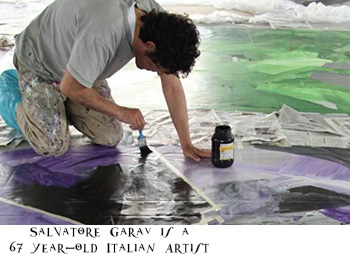We read fiction books because they take us to imaginary worlds where we meet imaginary people and feel sad for them when they are hurting and glad for them when they win. We like to visit these imaginary people in their imaginary worlds. But the imaginary worlds are not theirs, they are our own. And we furnish these imaginary people with imaginary bodies and faces.
Salvatore Garau is Italian, so his description of “Aphrodite Crying” suffered, I’m sure, when it was translated into English. But the wizard and I are convinced that Garau isn’t selling The King’s New Clothes. We believe Garau has been exposed to M-Theory, the most widely embraced perspective on String Theory, because of the many statements he has made in interviews about Heisenberg’s Uncertainty Principle and about empty space having weight and being full of energy.
In the same way that the wizard (1.) tells a story and then (2.) gives that story a name and then (3.) localizes that story and that name onto the piece of jewelry and sells it by the thousands to people who (4.) find beauty and meaning and truth in the story, Salvatore Garau has localized the stories of “Aphrodite Crying” and “Buddha in Contemplation” and “I Am” into little circles and squares in public places where we can furnish each of them with the imaginary bodies and faces and postures of our choosing.
Just as the investor wants to tell “a dinner party story” about the inventor he believes in, the buyers of the invisible sculptures of Salvatore Garau want to tell a story about the beauty and meaning and truth they find in an idea that has been localized to a point-of-contact in a specific space nearby.
This ad says, “Harley-Davidson turns ordinary people living ordinary lives into exciting people living exciting lives.” – Indy
